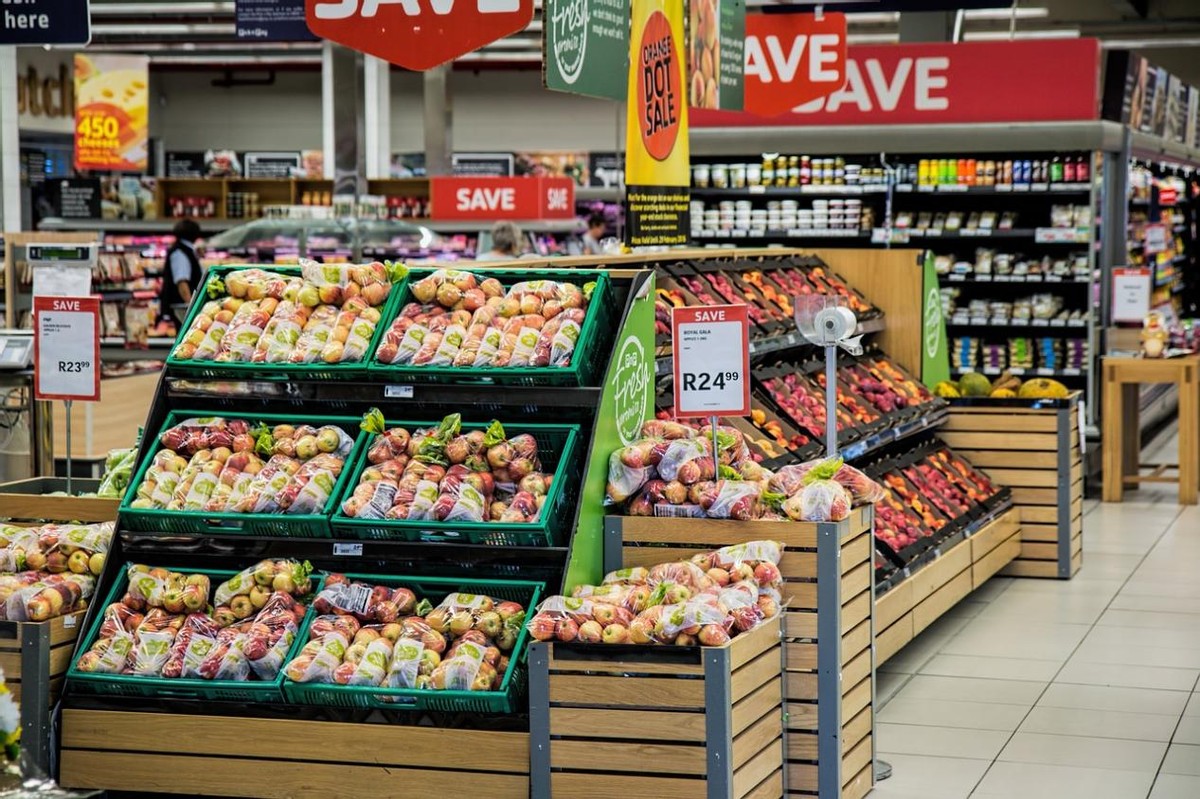When the shelves of the 'World's Factory' turn domestic, who can catch this wave of 'reverse overseas shopping'?
![]() 04/18 2025
04/18 2025
![]() 471
471
"From fully loaded export orders to piles of return labels, it only took three months." This is the sigh of a toy exporter at the Canton Fair, which also reveals the collective anxiety of domestic foreign trade enterprises at present.
Recently, global demand has weakened, maritime shipping prices have plummeted, and overseas inflation has soared - the 'World's Factory' that once marched forward in exports is now facing an unprecedented survival test.
But recently, East Buy started the special action of 'foreign trade quality products settlement', bringing more high-quality foreign trade products into the live broadcast room; JD.com's procurement managers are also holding a 'procurement budget' of 200 billion yuan, knocking on the doors of foreign trade factories one by one; Yonghui Supermarket has opened a 'green channel' to complete rapid shelf placement in 15 days, working together with supply chain enterprises.
This wave of 'reverse overseas shopping' led by e-commerce platforms is subverting the traditional logic of foreign trade. When the transformation from export to domestic sales is upgraded from an 'emergency solution' to a 'strategic track', can foreign trade quality products become the 'new bullets' to activate domestic demand? The answer may be hidden in the present.
External drive combined with market pressure, the inevitable logic of export to domestic sales
Recently, the tightening of US tariff policies, which has had the greatest impact on the market, has directly hit foreign trade enterprises that rely on exports.
According to data from the General Administration of Customs, China's exports to the United States fell by 12% year-on-year in the first quarter of 2025, with electronic and machinery industries that rely on exports being hit the hardest.

Image source from pixabay
At the same time, the domestic consumer market is also undergoing an upgrade from 'quantity' to 'quality', and consumer demand for cost-effective and differentiated products has surged.
According to data from the China Internet Network Information Center, as of October 2024, the scale of online shopping users in China has exceeded 900 million. Taobao user data shows that the average annual consumption frequency of its users has increased to 5.2 times, and the average transaction value has rebounded by 7.3% month-on-month. This means that consumers are no longer simply pursuing 'low prices' but are more willing to pay for 'quality'.
This mismatch between supply and demand has given rise to the urgency of the transformation of foreign trade enterprises, and e-commerce platforms have become a key bridge connecting the two.
On the policy side, the China General Chamber of Commerce has taken the lead in expressing support for 'export to domestic sales', believing that it will become an important way to seek new development space. On the market side, platforms such as JD.com and East Buy significantly reduce the trial and error costs of foreign trade enterprises through traffic inclination, commission subsidies, and rapid settlement channels.
For example, Baidu announced that it will use AI technology and platform traffic to prioritize supporting 1 million enterprises in transforming from export to domestic sales and exploring the domestic market; Suning.com has opened an online '24-hour rapid settlement channel' for the pain points of foreign trade enterprises transforming to domestic sales, waiving deposits and simplifying procedures, with the fastest store opening time being 1 minute.
In addition, multiple retail enterprises, including Hema and Yonghui Supermarket, have also launched support plans to help foreign trade enterprises explore the domestic market. CR Vanguard officially launched four major initiatives on April 9 to help foreign trade enterprises expand the domestic market; Hema announced that it was officially opening a 24-hour green settlement channel for foreign trade enterprises and would later launch a 'foreign trade zone'.
The tightening of US tariff policies and the dual changes in domestic consumption upgrades are reshaping the survival logic of China's foreign trade industry. Faced with the pressure of declining exports and the quality opportunities in the domestic demand market, e-commerce platforms quickly build a 'buffer zone' and 'accelerator' for the transformation of foreign trade enterprises by leveraging their traffic, technology, and supply chain advantages.
From Baidu's AI technology empowerment to Suning's '1-minute rapid store opening', from CR Vanguard's four major initiatives to Hema's 'foreign trade zone', the multi-dimensional competition among platforms has shifted from simple traffic support to ecological empowerment.
These innovative models not only reflect the strategic bets of e-commerce giants on the foreign trade track but also indicate that the next stage of competition will focus on industrial chain integration capabilities and scenario-based operational efficiency. An ecological war surrounding 'foreign trade quality products' has quietly escalated.
JD.com's 'buyer system', Yonghui's 'rapid channel', e-commerce giants encroach on the foreign trade track
Under this trend, supply chain efficiency may become the focus of competition. Under the traditional foreign trade model, most enterprises are trapped at the bottom of the 'smiling curve' of OEM contract manufacturing, with profits being divided up by brand owners and channel providers. E-commerce platforms are helping foreign trade enterprises complete a 'dangerous leap' through data feedback and traffic inclination.
Yonghui's '15-day rapid shelf placement' and Hema's 'foreign trade zone' both attempt to quickly convert foreign trade inventory into effective supply in the domestic market by shortening the circulation link. JD.com's 200 billion yuan procurement plan relies on the self-operated model to directly digest foreign trade capacity and avoid low-price internal competition.

Image source from pixabay
From product packaging to after-sales service, a 'genetic recombination' targeting the Chinese market is taking place.
In-depth, the foreign trade support strategies of e-commerce platforms have gone beyond simple traffic support and turned to deeper ecological construction. Live e-commerce has become the core battlefield, and East Buy transforms the production strength of foreign trade enterprises into brand trust through the 'transparent factory' traceability live broadcast.
In addition, platform-based e-commerce can also break the deadlock through 'cultural IP + scenario-based marketing'. Taking East Buy as an example, the platform can embed foreign trade products into themed live broadcast rooms such as 'Italian kitchen aesthetics' and 'Nordic minimalist lifestyle', thereby tapping market potential.
Retail-based e-commerce can also break through the supply chain through heavy asset investment. Previously, JD Logistics transformed the automated warehouse of European integrated logistics service provider MW Logistics by introducing AGVs (Automated Guided Vehicles), improving its operational efficiency by 250% and reducing labor costs by 60%.
This 'nanny-style empowerment' is rewriting industry rules. While Yonghui is still providing 15-day shelf placement services for small and medium-sized manufacturers, JD.com has begun to build a moat with logistics efficiency.
Fresh food e-commerce has entered a 'window period battle' of rapid response. Taking Hema as an example, its 'foreign trade zone' hides another ambition, which is trying to further shorten the domestic listing cycle of imported fresh food.
In terms of technology empowerment, major platforms have begun to penetrate upstream of the industrial chain. For example, Suning's 'reverse customization support' helps foreign trade enterprises adjust product design through consumer data analysis; Baidu's 'Hui Boxing Digital Human Plan' uses AI technology to lower the threshold for live broadcasting, covering millions of enterprises.
From supply chain efficiency improvement to technology empowerment, the intervention of e-commerce platforms in foreign trade transformation has evolved from 'channel substitution' to 'ecological reconstruction'. Whether it is Yonghui, JD.com, or East Buy, the essence lies in breaking the dilemma of the 'smiling curve' of traditional foreign trade and liberating foreign trade enterprises from the shackles of contract manufacturing through data feedback, scenario-based marketing, and supply chain penetration.
Moreover, the in-depth advancement of technology empowerment indicates that this transformation is not only the optimization of commodity circulation but also a digital leap across the entire link from production to consumption.
The 'east wind' has arrived, and foreign trade quality products may spawn new e-commerce 'species'
When platform-based e-commerce taps into niche demands with 'cultural IP + scenario-based marketing' and retail giants join in to rewrite industry rules, a deeper proposition emerges.
Driven by the 'east wind' of the general environment and technology empowerment, can foreign trade quality products break through the traditional e-commerce model and spawn 'new species' that integrate flexible supply chains, immediate response, and global brands?
The answer may be hidden in the industrial practice of the next stage - when policy dividends and technological innovations overlap, the end result of foreign trade transformation may not only be corporate self-rescue but will also reshape the underlying logic of China's e-commerce.
At present, the 'Chinese new solution' for cross-border supply chains, taking Tmall Global as an example, may attempt the model of 'domestic ordering, direct delivery from bonded warehouses'. When consumers purchase foreign trade quality products, the system automatically matches bonded warehouse inventory to achieve 'next-day delivery'.
This superimposed effect of 'domestic customs territory + domestic demand market' benefits from technology support that is blurring the boundaries between domestic and foreign trade, giving birth to new species of 'global supply chain + localized services'.

Image source from pixabay
Secondly, the data barriers between the two cannot be ignored. Foreign trade enterprises have long relied on B-end orders and are less sensitive to C-end consumption trends. In this way, how to convert data into executable marketing strategies still requires in-depth collaboration between enterprises and platforms.
Taking JD.com as an example, its 'intelligent pricing system' analyzes market supply and demand relationships, competitor prices, and user behavior data through deep learning algorithms to achieve dynamic adjustment of commodity prices, ensuring profit margins while enhancing user experience. According to statistics, after the launch of this system, the commodity conversion rate on the JD.com platform increased by 15%, and user satisfaction also significantly improved.
Furthermore, for foreign trade factories, returning to the domestic demand market is not only a reverse penetration but also requires a secondary 'brand awakening'. Many foreign trade products have excellent quality but lack domestic market operation experience, and brand recognition is also significantly insufficient. From 'OEM' to 'independent design', foreign trade enterprises need to use e-commerce channels to complete brand transformation.
In this regard, East Buy's 'transparent factory' live broadcast and Yonghui's 'promotion support' attempt to solve trust issues through scenario-based displays, while JD.com's merchant training program targets operational capabilities.
Finally, as the EU carbon tariff forces supply chain upgrades, e-commerce platforms can embed ESG standards into product selection models. In the future, foreign trade quality products without green certification may lose their 'entry tickets'.
When the turbulence in the global trade chain and the awakening of the domestic demand market form a historic convergence, foreign trade quality products are emerging from the passive dilemma of 'export obstruction' and becoming a new lever to leverage the evolution of China's e-commerce.
From JD.com's 200 billion yuan procurement to Yonghui's 15-day rapid shelf placement, from East Buy's transparent factory live broadcast to Hema's direct delivery model from bonded warehouses, this transformation wave led by e-commerce platforms has evolved from simple inventory digestion to an ecological revolution encompassing supply chain efficiency improvement, technology empowerment, and brand reconstruction.
The end result of this transformation may not only lie in rescuing a batch of foreign trade factories but also in using 'foreign trade quality products' as a fulcrum to reconstruct the entire link value of China's e-commerce from the production end to the consumption end.
Source: HK Stocks Research Institute







